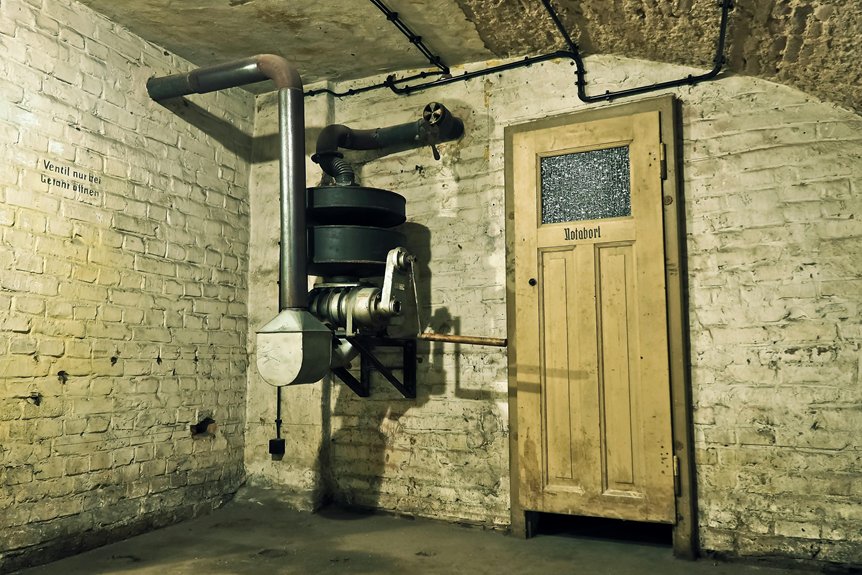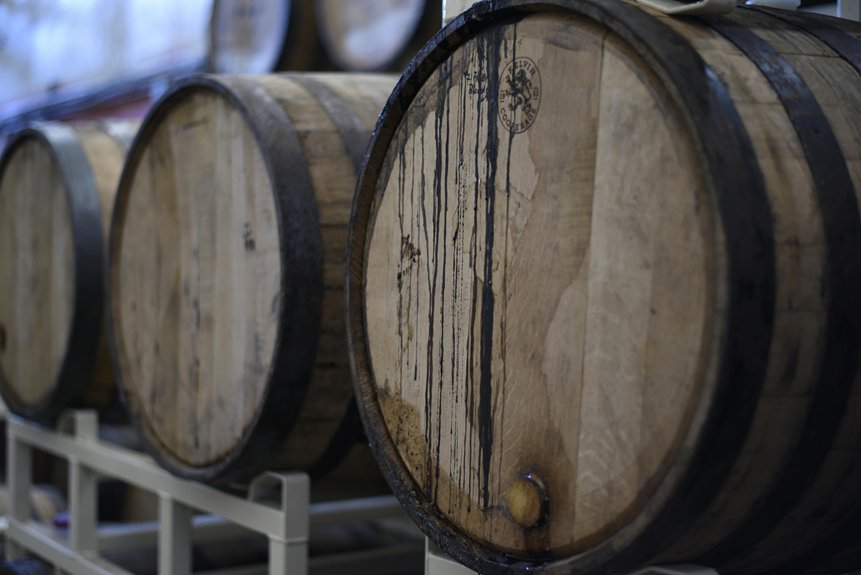When it comes to protecting your basement from water damage, understanding the various interior waterproofing systems is essential. Sump pumps, interior drainage systems, and vapor barriers each play a specific role in preventing moisture issues. Additionally, effective crack repair solutions and dehumidifiers can greatly enhance your basement’s defenses. Let’s explore these options in detail to find the best approach for your needs and guarantee a dry, healthy environment.
Key Takeaways
- Sump pumps are essential for removing water accumulation and protecting basements from flooding damage.
- Interior drainage systems, like French drains, redirect water away from the foundation and prevent pooling.
- Wall coatings, such as acrylic and epoxy, provide waterproofing for basement walls and enhance durability.
- Vapor barriers, including polyethylene sheets and liquid membranes, prevent moisture seepage into basements effectively.
- Dehumidifiers help manage humidity levels, reducing mold growth risk and maintaining a dry environment.
Sump Pumps
When it comes to protecting your basement from water damage, sump pumps are a reliable solution you should consider.
Proper sump pump installation is essential for effective operation; make sure it’s placed in the lowest part of your basement and connected to a discharge line.
Ensure your sump pump is installed in the lowest part of your basement and connected to a discharge line for optimal performance.
Regular sump pump maintenance is equally important; check the pump’s functionality, clean the sump pit, and test the float switch periodically.
This routine prevents clogs and guarantees your system operates efficiently during heavy rainfall or flooding.
Interior Drainage Systems
Interior drainage systems are vital for managing water intrusion in your basement.
You’ll find various types, each designed to channel water away effectively, and understanding their installation process is essential for ideal performance.
Let’s explore the different systems available and how they can be integrated into your waterproofing strategy.
Types of Drainage Systems
There are several effective types of drainage systems designed for interior basement waterproofing, each suited for specific conditions and needs.
French drains channel water away from your foundation, preventing pooling and moisture buildup. They consist of a trench filled with gravel and a perforated pipe, efficiently directing water away from the basement.
Foundation drains, on the other hand, are installed around the perimeter of your basement, capturing water before it can seep in.
Both systems work to reduce hydrostatic pressure and protect your basement from water damage, ensuring a dry and safe environment for your home.
Installation Process Overview
Before diving into the installation of interior drainage systems, it’s essential to assess your basement’s specific needs and conditions.
Here’s a streamlined overview of effective installation techniques to enhance system efficiency:
- Preparation: Clear the area and identify water entry points.
- Excavation: Dig a trench along the perimeter of the basement floor.
- Drainage Installation: Place a perforated pipe within the trench, guaranteeing it slopes towards a sump pump or drainage outlet.
- Backfill: Cover the pipe with gravel and replace the concrete floor, sealing the system effectively.
Following these steps guarantees a reliable and efficient interior drainage solution for your basement.
Wall Coatings
When it comes to waterproofing your basement walls, wall coatings are a practical option worth considering.
These coatings come in various types, each designed to provide specific benefits such as moisture resistance and added durability.
Understanding the different options available can help you choose the right solution for your basement’s needs.
Types of Wall Coatings
While you might think that all wall coatings are the same, the truth is that various types exist to address specific moisture issues in basements.
Understanding these options can enhance your waterproofing techniques. Here are four common wall coatings:
- Acrylic Coatings: Flexible and water-resistant, suitable for damp environments.
- Epoxy Coatings: Durable and resistant to chemicals, great for heavy moisture areas.
- Cementitious Coatings: Made from cement-based materials, ideal for preventing water ingress.
- Polyurethane Coatings: Highly elastic and waterproof, perfect for sealing cracks.
Selecting the right coating materials is essential for effective moisture control.
Benefits of Wall Coatings
Understanding the benefits of wall coatings can greatly enhance the effectiveness of your basement waterproofing strategy.
Wall coating applications provide a durable barrier, preventing moisture penetration and protecting your foundation. One of the significant wall coating advantages is their ability to resist mold and mildew growth, promoting a healthier environment.
Additionally, these coatings can improve your basement’s aesthetic appeal by offering various finishes. They’re also easy to apply and maintain, making them a practical choice for homeowners.
Vapor Barriers
Vapor barriers play an essential role in preventing moisture from seeping into your basement, protecting it from potential damage.
To guarantee their vapor barrier effectiveness, consider the following materials:
- Polyethylene sheets – These are durable and widely used for their moisture resistance.
- Foil-faced insulation – This option reflects heat while preventing moisture.
- Liquid membranes – These can be applied directly to walls for a seamless barrier.
- Vinyl barriers – Lightweight and easy to install, they offer good moisture protection.
Choosing the right vapor barrier materials is vital for maintaining a dry, safe basement environment.
Crack Repair Solutions
Moisture intrusion can often lead to cracks in your basement walls, compromising the structure and inviting further water damage.
To address this, you can utilize epoxy injection or polyurethane foam. Epoxy injection involves filling the cracks with a strong adhesive that bonds to the wall, effectively sealing and reinforcing it. This method is ideal for structural repairs.
Alternatively, polyurethane foam expands upon application, filling voids and creating a waterproof barrier. This is particularly effective for smaller cracks and can help alleviate pressure from water buildup.
Both methods provide reliable solutions for maintaining the integrity of your basement.
Dehumidifiers
Dehumidifiers play an essential role in managing humidity levels in your basement, helping to prevent mold growth and water damage.
To guarantee effective humidity control, consider these dehumidifier maintenance tips:
- Regularly check the filter: Clean or replace it every few months to maintain efficiency.
- Monitor humidity levels: Use a hygrometer to guarantee your basement stays below 60% humidity.
- Empty the water reservoir: If not using a continuous drain, empty it regularly to prevent overflow.
- Inspect for leaks: Regularly check the unit for any signs of water leaks or damage.
Conclusion
In summary, selecting the right interior basement waterproofing system is essential for protecting your home from water damage. Sump pumps efficiently remove excess water, while interior drainage systems like French drains redirect moisture away from your foundation. Wall coatings and vapor barriers prevent seepage, and crack repair solutions address structural vulnerabilities. Don’t forget about dehumidifiers to combat humidity and mold growth. By implementing these systems, you’ll guarantee a dry, safe, and healthy basement environment for years to come.




